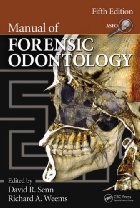Toward green growth and low-carbon urban development (EBOOK)
 Edited by Zheng Tang, Wei Dong and Yunwoo Nam
Edited by Zheng Tang, Wei Dong and Yunwoo Nam
Cities face critical challenges connected to population growth, urbanization, and climate change. Fundamental transformations in urban planning, community design, and infrastructure development are absolutely needed to address the problems raised by land use changes. A series of urban development patterns must be adjusted towards green growth and low-carbon development styles. A transition from conventional urban development models to a green or low-carbon future needs to change the system of the “systems”, such as energy, water, waste, mobility, and infrastructure systems. Cities are facing huge pressure and great opportunities to make these transitions through more effective arrangement of land use development footprints.
This book introduces the significant trend of urban planning towards green growth and low-carbon development patterns and reviews the history of urban development models while illustrating key concepts underpinning theories of green growth and low-carbon development. It presents a ground-breaking analysis of the role of urban planning in the translation of green growth and low-carbon development and also provides an up-to-date discussion of current practices with a vision of new urbanism and post-modern land use planning patterns. Introduced in this book are broad concepts of urban and land use planning, and a description of practical planning approaches. The authors explain how to incorporate core “green” and “low-carbon” concepts into urban planning and community development. Also discussed are the tools and processes necessary to develop a green and low-carbon development strategy where the major methods include energy conservation and efficiency, transportation planning, livability and walkability techniques, environmental planning, low impact community design skills, planning support systems, and public participation. A diverse range of examples, from North America, Europe, Africa, and China, are provided to analyze the barriers and solutions in socio-technical transitions emerging in different urban contexts. An international context of urban planning and a proposed model to assess future conditions, evaluate policy choices, create visions, and compare scenarios is presented. The topics in this book add to existing urban planning literature on social translations and introduce critical questions in making the translation of complex urban systems. This book can help academics, policy makers, practitioners and researchers interested in the development of green cities and low-carbon development. (Imprint: Nova)



